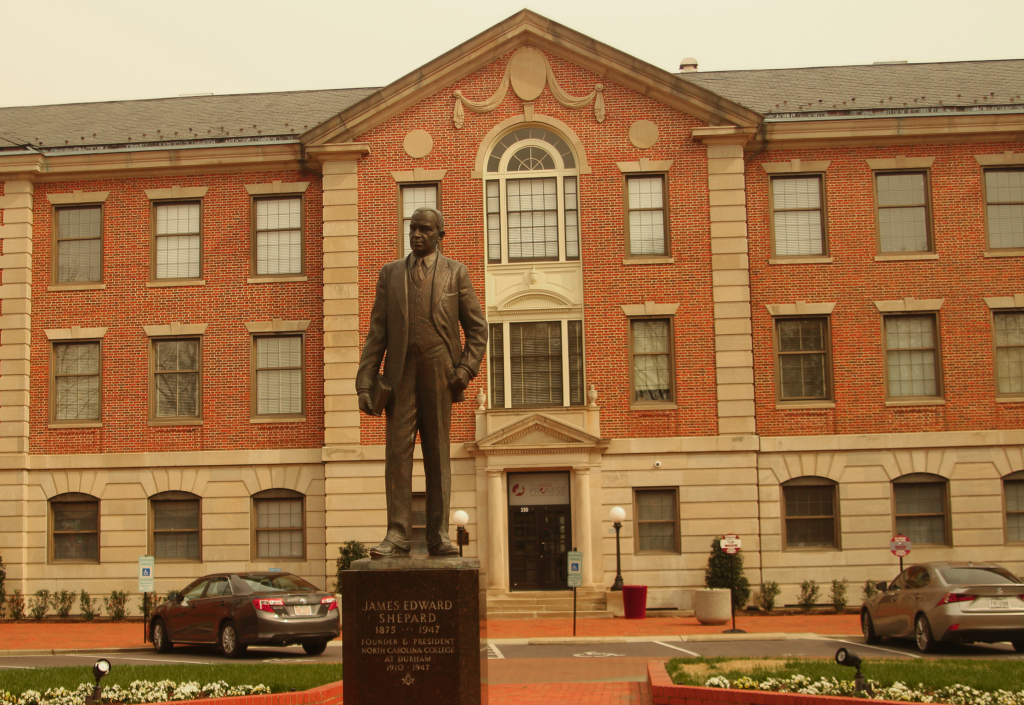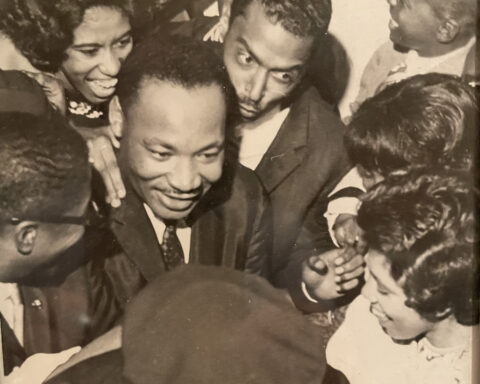On Wednesday, Feb. 27, the N.C. Central University Board of Trustees voted unanimously to rename the Clyde R. Hoey Administration Building to the Dr. James E. Shepard Administration Building, effective immediately.
“Along with growth and progress for our university comes the opportunity for reflection and change,” Chancellor Johnson O. Akinleye told the NCCU community in a prepared statement following the vote. “Today, when young men and women walk pass the Dr. James E. Shepard Administration Building, it will be a place that honors our founder and stand as a point of pride for generations to come.”
In his statement, Akinleye addressed the most recent campaign to remove the former N.C. governor’s name from the administration building, which houses the vast majority of NCCU’s administrative affairs, including Akinleye’s own office, the office of the provost, and the bursar’s office.
Akinleye’s timeline starts at the Student Government Association’s renaming request to the Board of Trustees under then-student body president and ex officio board member Michael Hopkins. That request was made as a result of a grassroots effort by student activists to educate their peers, including Hopkins, on Hoey’s segregationist belief system.
In 2017, history and political science junior Ajamu Dillahunt started a Change.org petition titled “The NCCU community refuses to celebrate a white segregationist” in which Dillahunt makes Hoey’s views—and their impropriety for the namesake of a notable NCCU building—clear.
“While discussing ‘Negro’ education in 1954, after the Brown v. Board of Education opinion was issued, Hoey stated: ‘North Carolina does not believe in social equality between the races and will not tolerate mixed schools for the races,'” Dillahunt detailed in the body of the petition. “This was the philosophy of Clyde Hoey.”
The petition text also submits Dillahunt’s opinion as to who the building should be renamed after following Hoey’s dismissal: Douglas Moore and Virginia Williams, two of the seven activists arrested in relation to the 1957 Royal Ice Cream Parlor sit-in, which predates the famed Greensboro Woolworth’s protests by three years. Their efforts are most visibly commemorated as part of the Durham Civil Rights History Mural downtown.
“(We) believe the building should be named after individuals who challenged the segregationist laws Hoey believed in,” the petition reads. “Their honorable actions reflect the values of our University.”
Reflecting university values was also a major factor for the board in their decision to rename the building to honor Shepard.
“Dr. Shepard was a visionary leader who had a tremendous impact on the educational landscape here at NCCU and throughout the country,” Akinleye said. “His central vision focused on training and cultivating moral leadership, which still remains a priority of our institution.”
Hopkins’ former vice president and successor, senior Davanta Parker, also stressed the importance of upholding NCCU’s motto of “Truth and Service.”
“The renaming of the Dr. James E. Shepard Administration Building is monumental in NCCU’s history as we move forward in our mission of promoting diversity, and ensuring that our campus is fulfilling the true values of both truth and service,” Parker was quoted as saying in Akinleye’s statement. “This decision shows that the voice of the student body truly matters and when we speak up we can make significant change.”
It is unknown if the marker erected by the Historic Preservation Society of Durham near the front doors denoting the building’s historical significance will be removed or replaced with the structure’s new name.



















